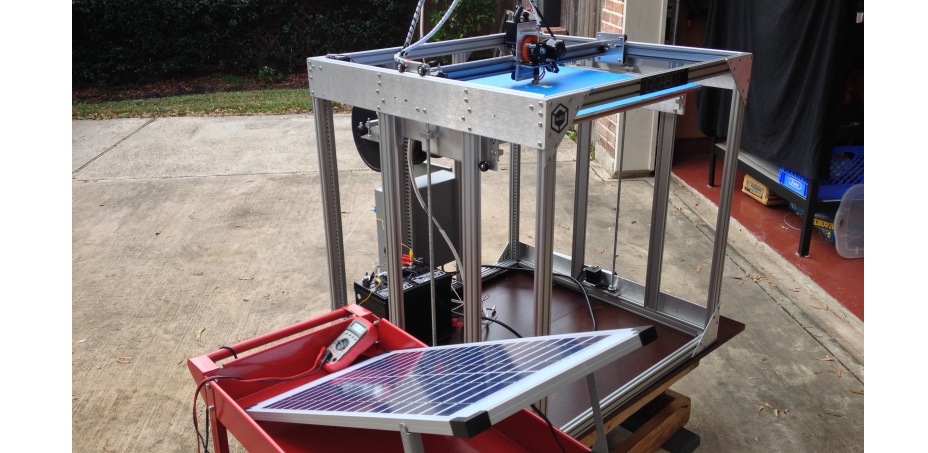There is a great deal of consensus around the idea that 3D printing is a technology with enormous potential for helping out in a wide variety of contexts. Efforts are continually being made to create structures and systems that allow more and more people access to the technology. The machines have become smaller, been made less expensive, and mechanisms for creating recycled feedstock have been developed. Another area that many people are working to address is the need for electrical supply.
The company, re:3D, is no newcomer to the 3D printing world. The Gigabot, their flagship technology, is a 3D printer designed with a build volume of eight cubic feet, allowing it to create objects up to 30 times bigger than other competing desktop 3D printers. Unfortunately, it has a plug and that can sometimes present a problem — and this is what re:3D co-founder Chris Gerty set out to remedy.
After making that determination, Gerty connected the machine’s controller board and internal cooling fan to a car battery. The next question he needed to answer was: how long will it print with this setup?
Gerty summed up the problem he had to address when working to take the Gigabot off the grid:
“I like to equate electricity to water coming out of a home… so to follow that analogy, I had to figure out if I could hold enough ‘water pressure’ (voltage) to keep the controller alive, a large enough ‘holding tank’ (car battery) to last for the entire print, while using solar panels to add enough ‘water’ (power) to the system during the print.”
Gerty’s idea was to use a solar panel but he was faced with issues of sufficient power supply and the ability of solar energy to provide consistent enough power for the printing to continue uninterrupted from start to finish. However, after a number of modifications and some good old-fashioned tinkering, Gerty was able to successfully complete a 13-hour continuous print – the end product being a 12” tall vase.
The process he outlines is by no means a surefire way to create a solar powered Gigabot out of the box and Gerty is hoping that his fellow solar 3D printing wonks will offer contributions and suggestions to help him improve upon the design. Importantly, this served as a proof of concept; it is possible to imagine that 3D printing could become ‘cord free’ in the reasonably near future. As you can see from the map of Global Gigabot Owners, there’s a great deal of uncharted territory out there, much of which would be well served by an off-the-grid printer such as this one.
Gerty summed up the lessons of his experiment:
“Clearly there is a little more work to do before we have a brownout-proof or solar-ready Gigabot out of the box, but I think these experiments prove it’s within the realm of possibility to create 3D objects anywhere, given the need, a robust enough printer, and a light bulb’s worth of energy and imagination.”
Let us know what you think about Gerty’s thoughts over in the Gigabot 3D Printer Goes Off the Grid forum thread at 3DPB.com.
